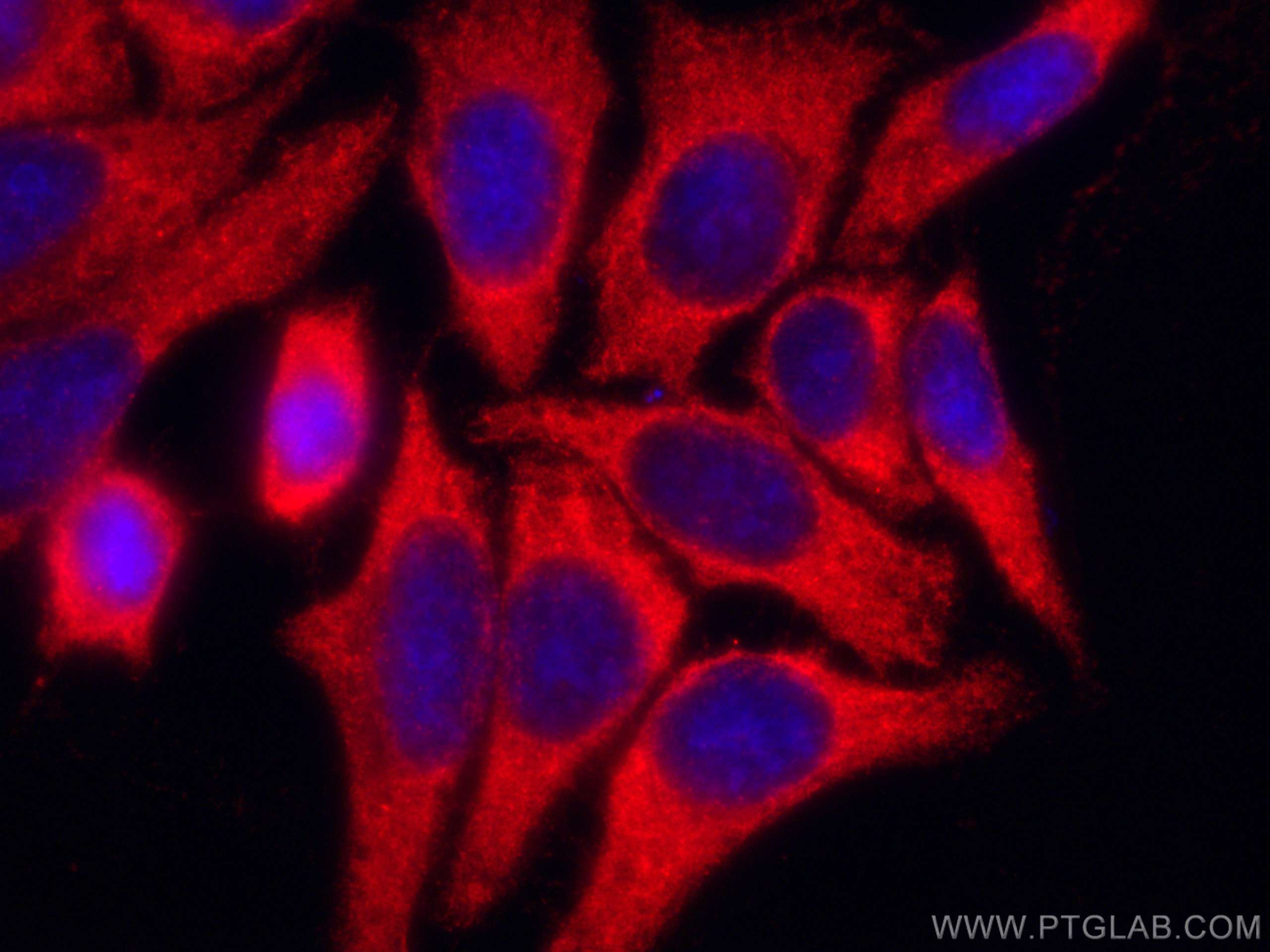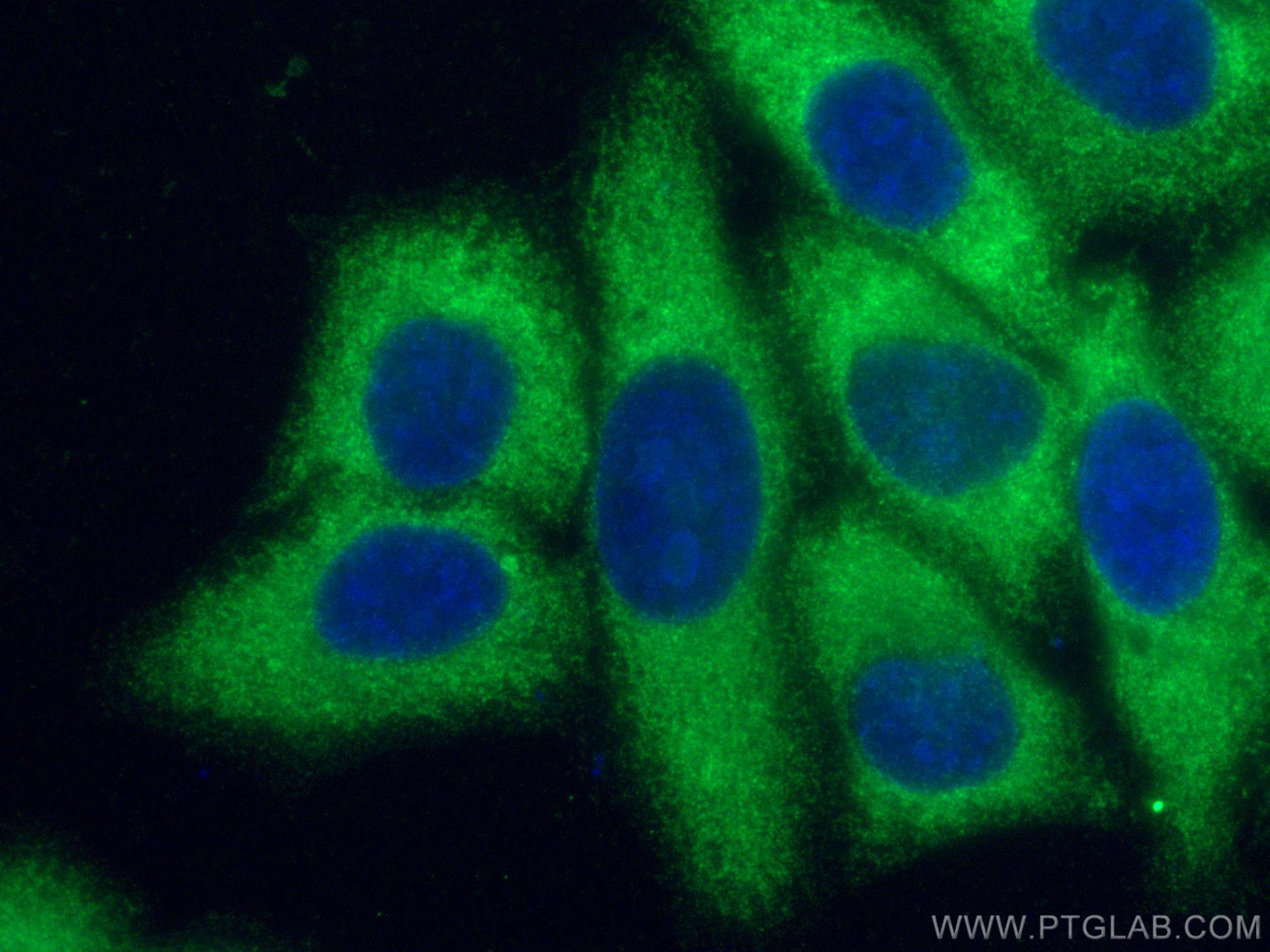Tested Applications
| Positive IF/ICC detected in | HepG2 cells |
Mouse monoclonal antibodies of IgM isotype can be detected with "anti-mouse IgG (H+L)" secondary antibodies.
Recommended dilution
| Application | Dilution |
|---|---|
| Immunofluorescence (IF)/ICC | IF/ICC : 1:50-1:500 |
| It is recommended that this reagent should be titrated in each testing system to obtain optimal results. | |
| Sample-dependent, Check data in validation data gallery. | |
Product Information
CL594-67184 targets DNAJA1 in IF/ICC applications and shows reactivity with Human, mouse, rat samples.
| Tested Reactivity | Human, mouse, rat |
| Host / Isotype | Mouse / IgM |
| Class | Monoclonal |
| Type | Antibody |
| Immunogen |
CatNo: Ag2284 Product name: Recombinant human DNAJA1 protein Source: e coli.-derived, PGEX-4T Tag: GST Domain: 1-397 aa of BC008182 Sequence: MVKETTYYDVLGVKPNATQEELKKAYRKLALKYHPDKNPNEGEKFKQISQAYEVLSDAKKRELYDKGGEQAIKEGGAGGGFGSPMDIFDMFFGGGGRMQRERRGKNVVHQLSVTLEDLYNGATRKLALQKNVICDKCEGRGGKKGAVECCPNCRGTGMQIRIHQIGPGMVQQIQSVCMECQGHGERISPKDRCKSCNGRKIVREKKILEVHIDKGMKDGQKITFHGEGDQEPGLEPGDIIIVLDQKDHAVFTRRGEDLFMCMDIQLVEALCGFQKPISTLDNRTIVITSHPGQIVKHGDIKCVLNEGMPIYRRPYEKGRLIIEFKVNFPENGFLSPDKLSLLEKLLPERKEVEETDEMDQVELVDFDPNQERRRHYNGEAYEDDEHHPRGGVQCQTS Predict reactive species |
| Full Name | DnaJ (Hsp40) homolog, subfamily A, member 1 |
| Calculated Molecular Weight | 397 aa, 45 kDa |
| Observed Molecular Weight | 45 kDa |
| GenBank Accession Number | BC008182 |
| Gene Symbol | DNAJA1 |
| Gene ID (NCBI) | 3301 |
| RRID | AB_2934760 |
| Conjugate | CoraLite®594 Fluorescent Dye |
| Excitation/Emission Maxima Wavelengths | 588 nm / 604 nm |
| Form | Liquid |
| Purification Method | Euglobulin precipitation |
| UNIPROT ID | P31689 |
| Storage Buffer | PBS with 50% glycerol, 0.05% Proclin300, 0.5% BSA, pH 7.3. |
| Storage Conditions | Store at -20°C. Avoid exposure to light. Stable for one year after shipment. Aliquoting is unnecessary for -20oC storage. |
Background Information
DNAJA1 is a member of the DnaJ proteins (also known as Hsp40 or Hsc40) which are cochaperones to DnaK (Hsp70) and function to modulate protein assembly, disassembly, and translocation. DNAJA1 has been reported to get involved in various processes, including virus infection, tau clearance, and mutant p53 degradation.
Protocols
| Product Specific Protocols | |
|---|---|
| IF protocol for CL594 DNAJA1 antibody CL594-67184 | Download protocol |
| Standard Protocols | |
|---|---|
| Click here to view our Standard Protocols |






